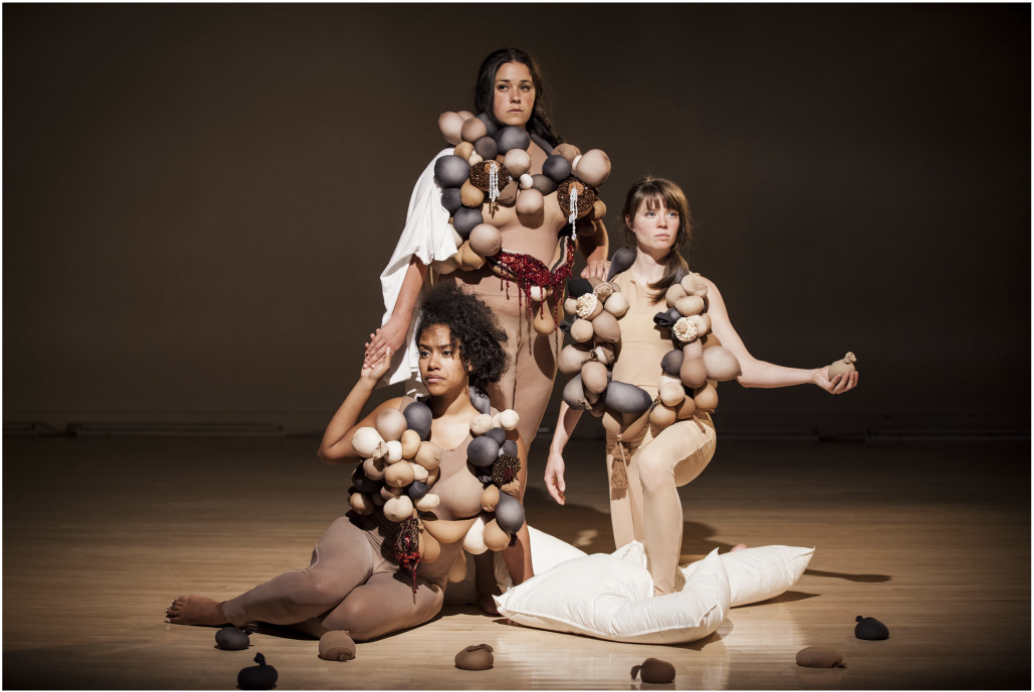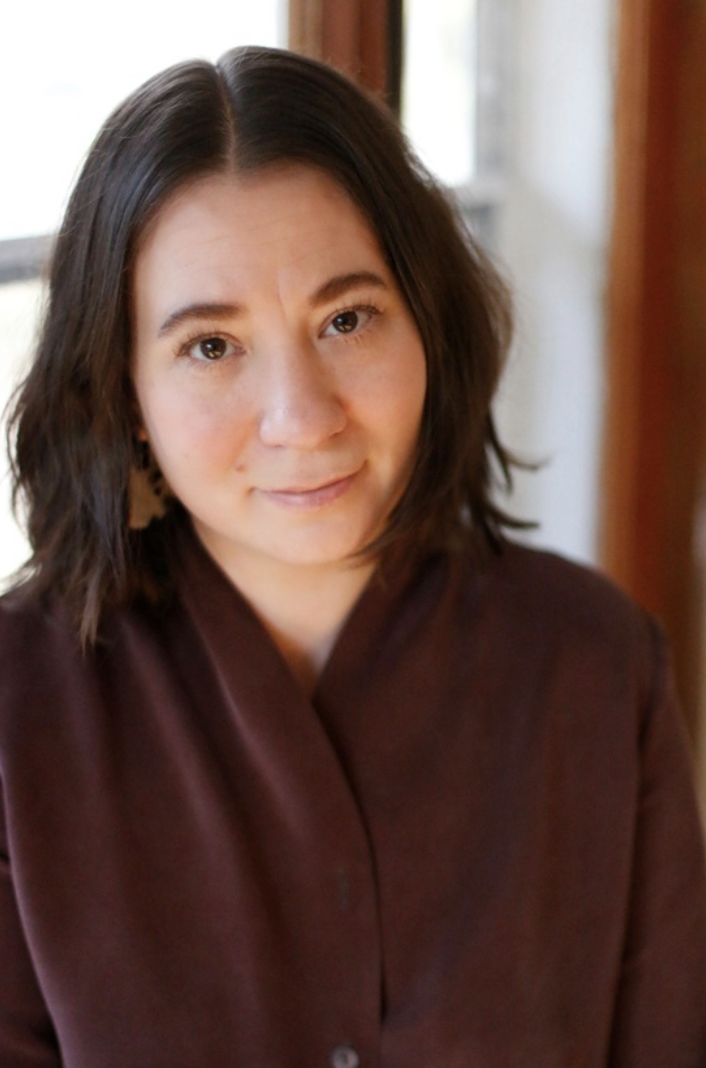Faces and Spaces: Annie Novotny
Annie Novotny “winks at gender performance” in the course she teaches at the School of the Art Institute of Chicago.
At the School of the Art Institute of Chicago, three women stand on stage, their bodies adorned with flesh-colored balloons blown up to various sizes to resemble breasts — smooth and wrinkled, sagging and perky.
These women are part of Prof. Annie Novotny’s class “Transformation and Spectacle,” which delves into the intersection of fashion and performance, whether that’s performing through the arts or in our everyday lives. When she’s not teaching, Novotny works as an art therapist and uses her knowledge of the body to delve into the physiological effects of her clients’ emotions.
Novotny is a veteran of the fashion industry. After graduating from SAIC in 2004 with a minor in Fiber and Material Studies, she moved to New York and worked as a fashion designer for over a decade before returning to Chicago, where she started her own clothing line. Now, she teaches the next generation of fashion designers.
STITCH sat down with Annie Novotny to discuss the human form as a vessel for art, the ways in which we perform and the body as being inherently political.
This interview has been edited for length and clarity.
Vaibhavi Hemasundar: I’ve heard you call fashion a “punctuation mark for the body.” What do you mean by that?
Annie Novotny: It's a necessity to be clothed to protect our very vulnerable bodies. But, fashion is also such a signifier of who we are and our first line of defense against the world. I love the idea that fashion is a tool both to indicate that we are a part of, and also separate from, one another.
I always use this analogy when I talk to my students about the way that fashion can speak for you. A punk walking down Michigan Ave. with a huge purple mohawk, chains, ripped-up clothing and piercings is going to stand out among the suits with their briefcases. But then a punk at a concert is just a punk in a sea of punks.
VH: I understand your class delves into how we use fashion to perform gender in our everyday lives. What can you tell me about that?
AN: Am I being really conscious about whether or not I'm wearing something that is feminine, sexy or comfortable? And for male identifying people as well, there's a certain expectation of what maleness or masculinity might look like in a professional setting.
Clothing is truly another language. There's a certain amount of privilege that goes along with
someone who can pass as straight but they consider themselves to be queer. You have to recognize that even when people are making decisions that might align most authentically with who they are and how they feel, that might be risky for them. Performing gender, it's kind of like code switching. There’s this idea of being able to move throughout different spaces and be safe.
VH: What are other ways in which fashion ties into this conversation about code switching?
AN: This could be a 25-hour discussion just about the regulation that's placed upon Black women's hair. I think a lot of this comes back to the idea that neoliberal capitalist structures don't want us to be individuals. They want us to fall in line. I think each person gets to decide, and even not deciding is a decision. Normcore is still a decision.
VH: You describe your work as an exploration of “mythology versus reality.” What do you mean by that?
AN: Fashion can be very fantastical. You can inhabit a character based on what you're wearing or not wearing. My earliest memories of fashion are of watching my mom get ready for her job in the ‘80s. Wearing three colors of eyeshadow was very acceptable at the time. She would start with this pink layer, and then she would add this purple layer. I like thinking of what it means to put on this war paint and enter this ‘80s unregulated market where you're clawing your way through.
VH: I think that opens up this very interesting discourse about makeup’s role and whether it's restrictive, or whether it's liberating. How does makeup play a role in bodily expression, not just for women, but people of all genders?
AN: I think that whether it's liberating or confining really has everything to do with the person. When you think about this idea of enhancing your features, making your eyes bigger, your lips fuller or your cheeks flushed, it’s all mimicking the physiological responses you have when you're aroused.
Makeup-wise, I’m a pretty simple gal. I put on a little blush, and at this point with two young kids I just like trying to make myself not look dead. How do I show up in the world looking like I slept through the night? Sometimes we’re just trying to artificially recreate what our body does naturally when it's feeling good.
VH: You describe your work as “exploring the terrain of the postmodern woman.” Could you elaborate on that idea?
AN: A lot of the work that I do that's more performative is grappling with my body in a postmodern context.
One of the pieces that I made a few years back was this heavily beaded belt with Swarovski glass crystals that was designed to look like a cesarean-section. It looked like it was popping open with bloody scarlet beads. So it’s like, what do I get for pushing a human out of my body?
I tend to wink at gender ideas a lot with my work. Because I think a lot of it's bullshit. And I want other people to realize that when they see something that kind of touches them in a weird way. Like, when you think about this idea that a woman who has a C-section and a big scar because of it tends to want to hide it or conceal it. Who told us that it wasn't beautiful to have survived something? And I think about how different that is for men and women. Dudes will be the first ones to be like, “Have you seen my scars?”
VH: Your work explores the body as both “political and mundane.” What does that mean to you?
AN: A lot of my work in the past has been in relation to motherhood, which is probably the most political and mundane thing you can ever think of. What’s more political or mundane than, like — a leaky boob?


